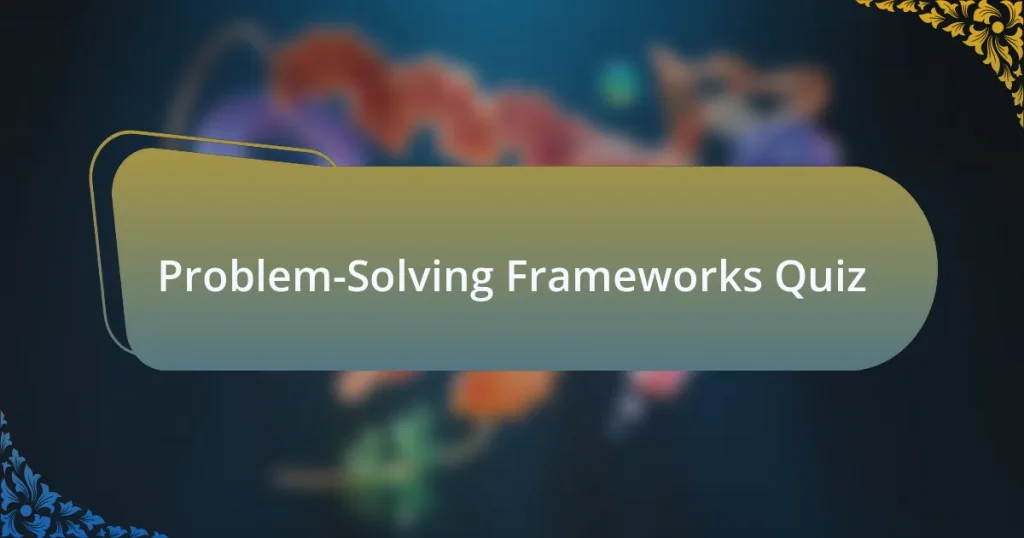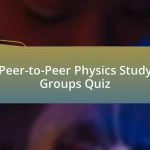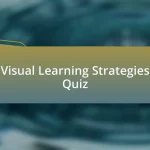Start of Problem-Solving Frameworks Quiz
1. What is a problem-solving framework?
- A specific type of equation used in physics calculations.
- A simple checklist without any analytical depth.
- A set of tools and techniques used to identify the cause of a problem and find the right solutions.
- A method only for brainstorming without any structured approach.
2. What are the 7 steps in McKinsey’s Problem Solving Framework?
- Collect information, Analyze risks, Develop plans, Test strategies, Launch campaigns, Review findings, Document processes.
- Define objectives, Explore alternatives, Evaluate consequences, Generate solutions, Implement changes, Assess outcomes, Communicate results.
- Identify the issue, Gather data, Formulate hypothesis, Analyze findings, Implement solution, Monitor results, Seek feedback.
- Decode and Conquer, Comprehend the situation, Identify the customer, Report the customer’s needs, Cut through prioritization, List solutions, Evaluate tradeoffs, Summarize recommendations.
3. What does CIRCLES stand for in McKinsey’s Framework?
- Comprehend, Identify, Report, Cut, List, Evaluate, Summarize
- Comprehend, Investigate, Review, Cut, Learn, Execute, Summarize
- Calculate, Implement, Review, Check, List, Evaluate, Summarize
- Create, Identify, Review, Complete, Learn, Evaluate, Summarize
4. What is the purpose of the Fishbone Diagram?
- To create a step-by-step guide for solving any problem.
- To identify the root causes of a problem by visually organizing potential contributing factors.
- To track the financial performance of a project in detail.
- To present complex data in a visually appealing format.
5. What are the common cause categories in a Fishbone Diagram?
- People, Processes, Materials
- Profit, Loss, Revenue
- Contact, Location, Price
- Speed, Distance, Time
6. How do you choose the right problem-solving framework?
- Select a framework only based on the resources available at the moment.
- Consider the problem’s complexity, time constraints, and the level of stakeholder involvement.
- Always use the same framework regardless of the problem type.
- Choose a framework based on personal preference and past experiences.
7. What is Root Cause Analysis (RCA)?
- A structured method used to identify the root causes of a problem.
- A simple guesswork technique to solve any issue.
- A random method for collecting opinions from team members.
- An informal discussion among stakeholders to find solutions.
8. What is the Lightning Decision Jam (LDJ)?
- A rapid decision-making framework for time-limited situations.
- A framework for evaluating employee performance.
- A long-term strategic planning tool for organizations.
- A method for organizing team-building activities.
9. What is the Phoenix Checklist?
- A checklist for evaluating team performance in businesses.
- A method for organizing scientific experiments in physics.
- A strategy for managing project timelines in engineering.
- A comprehensive problem-solving framework developed by the CIA.
10. What is Open Space Technology?
- A method that creates a space where large groups take ownership of their problem-solving and lead individual sessions.
- A tool that helps single individuals solve personal dilemmas.
- A strategy for small teams to enhance their productivity through rigid guidelines.
- A framework used exclusively for scientific experiments and data analysis.
11. What is the Problem Tree?
- A method that involves brainstorming and organizing problems into a hierarchy.
- A strategy for calculating projectile motion in mechanics.
- A framework for analyzing atomic structures in chemistry.
- A technique for measuring gravitational forces in physics.
12. What is SWOT Analysis?
- A financial analysis technique for budgeting and forecasting.
- A tool for measuring customer satisfaction and product feedback.
- A method that identifies strengths, weaknesses, opportunities, and threats to facilitate problem-solving.
- A marketing strategy focused on online advertising and social media.
13. What is the Agreement-Certainty Matrix?
- A framework for calculating wave functions in quantum mechanics.
- A tool that helps teams align on the nature of the challenges facing them by sorting problems from simple to chaotic.
- A method for analyzing electric circuits in physical systems.
- A system used to map the forces acting on an object in motion.
14. What is SQUID?
- A method for calculating gravitational waves in space.
- A design for quantum computers and their logic operations.
- A model that allows a team to switch between giving questions and answers.
- A type of high-temperature superconductor.
15. What are the 8 steps in the Problem-Solving Framework by Practical Engineering Management?
- Identifying symptoms, Analyzing data, Testing solutions, Validating outcomes, Documenting findings, Communicating results, Implementing plans, Closing issues.
- Recognizing the problem, Defining the problem, Exploring the problem`s depths, Identifying stakeholders, Assessing the willingness to solve, Developing solution strategies, Implementing the solution, Monitoring and reviewing.
- Recognizing symptoms, Identifying causes, Analyzing impacts, Proposing alternatives, Scoping projects, Deploying solutions, Reviewing processes, Documenting changes.
- Defining goals, Setting objectives, Creating timelines, Assigning resources, Monitoring progress, Resolving conflicts, Evaluating impacts, Closing feedback loops.
16. What is the definition of a problem in the Practical Engineering Management framework?
- A method to visualize project timelines and deliverables.
- A difference between things as desired and things as perceived.
- A tool for comparing various engineering materials.
- A simple equation to calculate efficiency in engineering.
17. How do you recognize a problem in the Practical Engineering Management framework?
- Assume the problem will resolve itself over time without intervention.
- Acknowledge that a problem exists without necessarily requiring a deep understanding of the problem.
- Evaluate all possible solutions immediately to resolve the issue.
- Focus only on the symptoms of the problem rather than identifying the actual issue.
18. How do you define a problem in the Practical Engineering Management framework?
- Focus on potential solutions without defining the problem first.
- Describe the problem based on assumptions rather than evidence.
- Clearly articulate and define what the problem actually is by gathering and analyzing data.
- Identify only the consequences of the problem without specifics.
19. What does exploring the problem`s depths involve in the Practical Engineering Management framework?
- Scheduling regular meetings to discuss project progress.
- Conducting root cause analysis or interviews with users and team members, considering external factors.
- Defining the team roles and responsibilities for the project.
- Creating a budget for project expenses and resource allocation.
20. Who are stakeholders in the Practical Engineering Management framework?
- Just the end-users affected by the outcome.
- All parties impacted by the problem, as well as those who will be involved in implementing solutions.
- Only project managers and team leaders involved in the process.
- Only the financial backers of the project.
21. How do you assess the willingness to solve a problem in the Practical Engineering Management framework?
- Evaluate the financial impact alone without stakeholder input.
- Analyze market trends without considering the problem context.
- Consider the pros and cons from different stakeholders` viewpoints to decide if the problem is worth solving.
- Focus solely on the team`s preferences for a quick decision.
22. What does developing solution strategies involve in the Practical Engineering Management framework?
- Brainstorming potential solutions and evaluating their feasibility, considering effectiveness, cost, and impact on stakeholders.
- Establishing a communication plan for stakeholder updates during implementation.
- Drafting a detailed project timeline with assigned roles and responsibilities.
- Collecting data on all previous project outcomes for reference.
23. What does implementing a solution involve in the Practical Engineering Management framework?
- Planning and executing the implementation process in detail, keeping all stakeholders informed.
- Establishing a budget and timeline without involving team members.
- Conducting a feasibility study and gathering opinions on stakeholder preferences.
- Documenting the problems without any communication to stakeholders.
24. How do you monitor and review a solution in the Practical Engineering Management framework?
- Only evaluating the solution after its long-term implementation.
- Conducting a final review without stakeholders involved.
- Establishing clear metrics for success and regularly reviewing them, gathering feedback from all relevant stakeholders.
- Ignoring previous metrics and changes in the project scope.
25. What is the purpose of writing a clear, specific description of a problem?
- To identify the who, what, where, and when of the problem.
- To ensure no one understands the issue clearly.
- To confuse the stakeholders involved.
- To make the problem sound more complex.
26. What is brainstorming in problem-solving?
- Analyzing the effectiveness of various solutions in detail.
- Generating as many potential solutions as possible without evaluating them at this stage.
- Creating a single step-by-step plan to solve the problem.
- Selecting the best solution based on predefined criteria.
27. What is TRIZ?
- A collection of 40 problem-solving techniques derived from methods inventors and patent holders used to get new patents.
- A method for calculating the speed of light in a vacuum.
- A general theory of relativity explaining gravitational forces.
- A set of mathematical equations used in quantum mechanics.
28. What are the general approaches in TRIZ?
- Only one universal approach exists.
- Four distinct categories of approaches.
- Three major techniques to resolve problems.
- About 10-12 general approaches.
29. How can TRIZ be applied in business?
- By avoiding innovation to maintain stability in operations.
- By relying solely on customer feedback for all business decisions.
- By implementing strict hierarchies to manage workforce efficiency.
- By using TRIZ to solve business problems or general organizational problems through sponsored classes.
30. What is the Agreement-Certainty Matrix used for?
- To help teams align on the nature of the challenges facing them by sorting problems from simple to chaotic.
- To evaluate employee performance and productivity.
- To organize team meetings and track attendance.
- To develop marketing strategies for product launches.
Congratulations on Completing the Quiz!
You’ve successfully completed the quiz on ‘Problem-Solving Frameworks’! Great job! Engaging with these concepts deepens your understanding of the strategies used in physics test preparation. Each question guided you through essential frameworks that enhance critical thinking. You likely discovered how to approach problems more systematically, allowing for clearer and more efficient solutions.
During the quiz, you may have learned the importance of breaking down complex issues into manageable parts. This skill is crucial in physics, where problems often involve multiple steps and ideas. Applying frameworks like the scientific method or other analytical approaches can help clarify your thought process. With these tools, you can approach your studies with more confidence and clarity.
For those eager to expand your knowledge further, we invite you to explore the next section on this page about ‘Problem-Solving Frameworks’. There, you’ll find valuable resources and detailed explanations to refine your skills even more. Understanding these frameworks can empower you in tackling physics problems, enhancing your overall test performance. Dive in and continue your journey toward mastery!
Problem-Solving Frameworks
Understanding Problem-Solving Frameworks in Physics
Problem-solving frameworks are structured approaches that guide individuals in analyzing and solving physics problems. These frameworks typically consist of several stages, such as understanding the problem, devising a plan, carrying out the plan, and evaluating the solution. In physics, a systematic framework helps students to break down complex problems into manageable parts, enhancing comprehension and efficiency. The use of frameworks facilitates a deeper understanding of physical concepts and fosters critical thinking skills.
Common Problem-Solving Frameworks Used in Physics
Several common frameworks are utilized in physics problem-solving. One popular method is the “5-step problem-solving process,” which includes identifying the knowns and unknowns, applying relevant principles, executing calculations, and verifying results. Another approach is the “conceptual model,” which relies on visual representations and diagrams to clarify relationships between physical elements. These frameworks promote organization and logical thinking, essential for mastering physics concepts and equations.
Applying the Problem-Solving Process to Physics Questions
Applying a problem-solving process to physics questions involves following a defined sequence to ensure accuracy and depth. Initially, identify all given information and required outcomes. Next, select appropriate physics principles and formulas that relate to the problem. Once a plan is crafted, execute calculations systematically while keeping units consistent. Finally, review the solution for logical consistency and conceptual validity. Practicing this process leads to improved problem-solving skills and better performance in tests.
Barriers to Effective Problem-Solving in Physics
Several barriers exist that can hinder effective problem-solving in physics. Misunderstanding fundamental concepts can lead to applying incorrect principles. Additionally, anxiety or stress during tests can impair logical thinking and cloud judgment. Lack of practice with problem-solving frameworks may also result in inefficient problem analysis and execution. Identifying these barriers is crucial, as overcoming them facilitates a more effective approach to physics problem-solving.
Strategies to Enhance Problem-Solving Skills in Physics
Various strategies can enhance problem-solving skills in physics. Regular practice with a diverse range of problems helps to reinforce concepts and build confidence. Collaborating with peers allows for the exchange of ideas and methods, offering new perspectives. Additionally, seeking feedback from instructors can provide insights into one’s problem-solving approach. Utilizing online resources and physics simulations can further deepen understanding and application of problem-solving frameworks.
What are Problem-Solving Frameworks in Physics Test Preparation?
Problem-solving frameworks in physics test preparation are structured approaches designed to tackle complex physics problems systematically. They typically include steps like identifying the problem, applying relevant physics principles, performing calculations, and reviewing the results. Research shows that using these frameworks enhances student performance, as frameworks help break down difficult problems into manageable parts, improving comprehension and retention of concepts.
How can Problem-Solving Frameworks improve Physics understanding?
Problem-solving frameworks improve physics understanding by providing a clear, methodical process for analyzing problems. Utilizing a framework like the “4-step approach” (identify, plan, solve, and check) helps students focus on key concepts rather than getting overwhelmed. Studies indicate that students who use structured frameworks in their study sessions achieve higher test scores, highlighting the effectiveness of these methods in reinforcing learning and ensuring mastery of complicated topics.
Where can students find resources for Problem-Solving Frameworks in Physics?
Students can find resources for problem-solving frameworks in physics through various platforms. Educational websites such as Khan Academy and Physics Classroom offer detailed tutorials. Additionally, textbooks specifically designed for physics education include sections on problem-solving strategies. Research has shown that these resources not only provide frameworks but also include practice problems that enhance skills effectively.
When should students apply Problem-Solving Frameworks during their studies?
Students should apply problem-solving frameworks during their initial learning phase and throughout exam preparation. Implementing these frameworks when first learning a new topic helps solidify understanding. As exams approach, using them becomes crucial for practice with varied problem types. Research indicates that consistent use of frameworks leads to better performance on assessments, reinforcing the importance of timely application.
Who benefits from using Problem-Solving Frameworks in Physics Test Preparation?
Both high school and college students benefit from using problem-solving frameworks in physics test preparation. These frameworks cater to various learning styles and help students develop critical thinking skills needed for tackling physics problems. Educational research shows that students across different proficiency levels experience increased confidence and improved problem-solving abilities when they employ these structured approaches.















